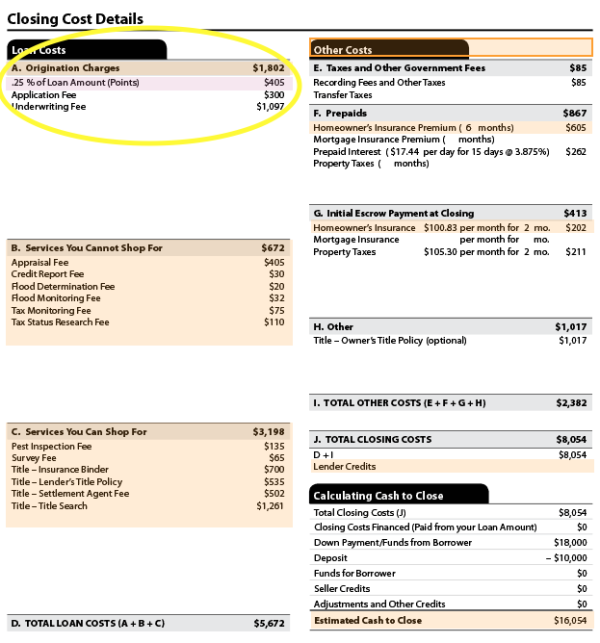How to Read a Mortgage Loan Estimate
The Loan Estimate boils down the terms and projected costs of a mortgage.

Some or all of the mortgage lenders featured on our site are advertising partners of NerdWallet, but this does not influence our evaluations, lender star ratings or the order in which lenders are listed on the page. Our opinions are our own. Here is a list of our partners.
After you apply for a mortgage, keep your eye out for the Loan Estimate, an official document from the lender.
Reading and comparing Loan Estimates from different lenders will help you understand the terms and costs of getting a home loan.
What is a Loan Estimate?
A Loan Estimate is a three-page government-mandated document that spells out the terms of a mortgage offer. To get a Loan Estimate you must provide a lender your name, income amount and Social Security number as well as the address of the property you want to buy, an estimated value of the property and the requested loan amount. Once you've applied with this information, the lender has three business days to provide a Loan Estimate.
Although you don't have to give more information about your finances at this stage, the Loan Estimate will be more accurate with the more details you provide, such as the amount of debt you carry and the type of mortgage you're interested in.
Reading a Loan Estimate
A Loan Estimate details the terms of your loan, including:
Expenses, with clear “yes” or “no” answers to important questions, such as whether each amount can increase after closing, whether your loan includes a prepayment penalty or a balloon payment and which expenses are included in your escrow account.
The projected monthly mortgage payment, including taxes, insurance and other assessments.
Estimated closing costs and the amount of cash you’ll need to have on hand at the time of settlement.
Information on services you can, and cannot, shop for — such as pest inspections, survey fees and the home appraisal.
The lender must give a new Loan Estimate if key information changes. For example, the loan offer may change and require a new Loan Estimate if the property appraisal comes in lower than expected. Or a new Loan Estimate might be necessary if your credit standing changes and you no longer qualify for the terms of the original loan offer.
Comparing Loan Estimates
The Loan Estimate also offers data that can help you compare loan offers from multiple lenders. The information to compare includes the total costs of third-party services, the annual percentage rate — your interest rate including fees — and the amount of interest you’ll pay over the loan term, expressed as a percentage of your total loan amount.
One important section to look for is at the top of Page 2, on the left-hand side of the page. That's where you'll see "Loan Costs" and "A. Origination Charges." You'll find two types of charges here:
Lender fees can have several different names, including "application fee" or "underwriting fee," as shown. You'll want to compare these origination fees among the lenders you are shopping.
Discount points are prepaid interest that you have the option of paying to reduce your interest rate. In the example below, an annotated screenshot from the Consumer Financial Protection Bureau's website, it's shown as ".25% of Loan Amount (Points)." For more detail, go to the CFPB website and click through all three pages of the sample Loan Estimate.

Page 2 of a sample Loan Estimate on the Consumer Financial Protection Bureau's website
It's a good idea to apply with a few lenders and compare Loan Estimates line by line to see which is the best deal.
» MORE: Calculate your closing costs
See the final terms in the Closing Disclosure
After choosing a lender, you'll go through the full mortgage underwriting process. The lender will order an appraisal of the property and may request more documentation of your finances. After final loan approval, you'll get the Closing Disclosure. This document gives the final terms and costs of your loan, including the specific amount you’ll need to pay at closing.
You’ll receive the Closing Disclosure at least three business days before your scheduled loan closing. Use this time to review the document for any changes, comparing your Closing Disclosure with the previously received Loan Estimate side by side. Call the lender if you have any questions.


